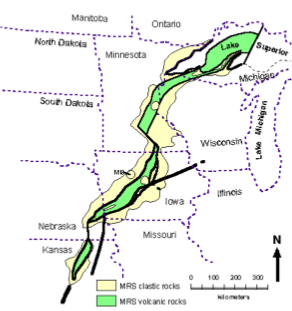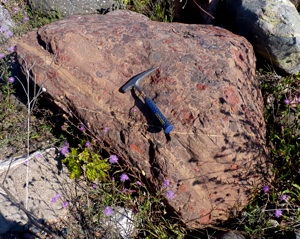

By selecting about 40 boulders, we can put in one place a detailed record of events that happened between about 1096 and 1070 million years ago to shape the peninsula and Lake Superior.
Each place on earth records a part of earth history. Here the theme is the Geology of the Keweenaw Rift, a geological event of ancient times (about 1.1 billion years ago) when the continent of those times (called Rodinia—it was long before there was any North America) began to split apart and when it was covered by huge lava flows. The rocks of the Keweenaw are mainly lavas (black rocks) and sediments (red rocks--sandstones and conglomerates), but there are many varieties represented and we have got most of them collected into one spot. So with one brief visit you can see great examples of all the local rocks. This allows a lot of interpretations of what the great rift and its environmental conditions were like. Thus the Boulder Garden becomes a place where full geological interpretation can be demonstrated to students in one class. We call this “reading the rocks” and this is a central activity of geology. Without a boulder garden it cannot be done without using several field days, traveling from one rock outcrop to another. The garden allows a holistic view of data from many field sites, to allow conception of a complex association of rocks at one time. The glacial smoothing of rock surfaces makes them exceptionally favorable for seeing rock structure and texture. There are many rock features that allow the determination of the orientation of rocks in 3 dimensions (which way is up?). In the case of boulders the top direction is random, but the information about top and bottom remains and can be interpreted readily by students. A particularly interesting issue that can be explored is the layering of flood basalt lava flows. The boulders represent different parts of the lava flows so students can be taught the structural elements of lavas and the variability of cooling and degassing which causes the textural differences. These features are also part of the training of materials scientists, and ceramicists.




Iowa Geol Survey
Bill Rose
Professor of Petrology
15 November 2010
